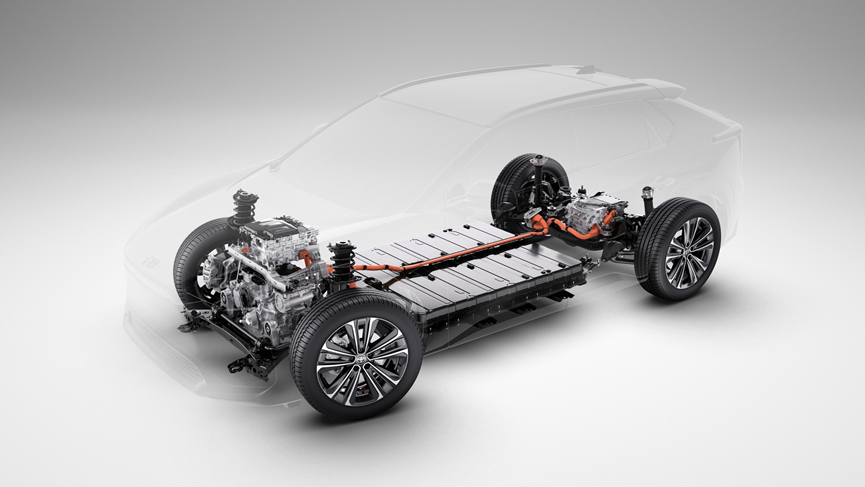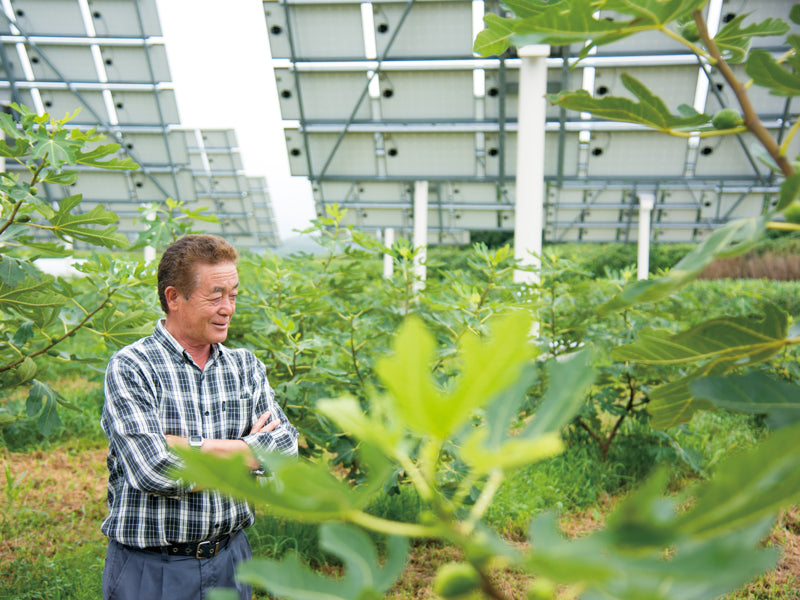http://www.iccsino.com/news/show-htm-itemid-16446.html
LFP Battery is Returning, driving Chinese LFP Battery Manufacturers going Overseas
Date:2022-02-23 From:ICC
LFP Battery is Returning, driving Chinese LFP Battery Manufacturers going Overseas
In the past 2021, lithium iron phosphate (LFP) has become the mainstream cathode material in China lithium-ion battery market due to its cost-effective advantage. Most LFP mainstream material manufacturers have turned losses into profits, and meanwhile, driven by the strong demand from downstream power battery sectors, LFP manufacturers are still sweeping the raw material of lithium carbonate even if faced with the rocket-flying prices at the end of the year. According to statistics from ICCSINO Database, the domestic production of lithium iron phosphate (LFP) in January 2022 was 59,100 tons, an increase of 158.9% year-on-year and a slight increase of 3.3% month-on-month.
Source: ICCSINO Database,
ICCSINO Annual Report - 2021 Lithium Iron Phosphate (LFP) Battery and Raw Material Market and Forecast
In 2021, the domestic power battery market is driven by the “two wheels” of both NCM & NCA and LFP material system. As one of the two main technical routes of power batteries, lithium iron phosphate (LFP) has poor battery life due to low energy density in the early years, making it having a poor market reputation. However, with the continuous progress of downstream battery factory technical routes and new energy subsidies, mid-end OEMs have built a variety of star models of lithium iron phosphate (LFP) versions for cost reduction and efficiency enhancement, which are widely recognized by the market due to their advantages in cost performance and safety.
According to the installed capacity of new energy vehicles and data from insurance registration, the installed capacity of domestic power batteries reached 154.5Gwh from January to December 2021, a year-on-year increase of 142.8%. Among them, lithium iron phosphate (LFP) batteries have achieved a significant increase in both the output and installed capacity, surpassing that of NCM & NCA batteries since July 2021. After the double overtake, the LFP advantage continued to expand. From January to December in 2021, the cumulative installed capacity of LFP batteries reached 79.8Gwh, accounting for 51.7%, with a year-on-year increase of 227.4%. Among them, CATL, BYD and Guoxuan Hi-Tech ranked the top three lithium iron phosphate (LFP) battery installations, with the CR3 over 85%.
Source: ICCSINO Annual Report - 2021 Lithium Iron Phosphate (LFP) Battery and Raw Material Market and Forecast,
ICCSINO Database, Vehicle Insurance Registration Data, CAEV
With the continuous improvement of environmental protection awareness around the world, China, as the largest new energy vehicle market, has nurtured many high-quality power battery manufacturers. The new energy markets will have more strong competition as the emerging new energy markets such as Europe and the United States have entered a rapid development channel. To meet the strong expected demand for power batteries across the world, Chinese companies continue to accelerate the process of going overseas, and lithium iron phosphate (LFP) batteries also appear frequently in the foreign markets.
"Co-production" between CATL and Tesla
As the leader of domestic power battery companies, CATL has wide cooperation and communication with overseas OEMs, and its customers cover most first-tier car companies. Among the many overseas car company customers of CATL, Tesla's affirmation of its lithium iron phosphate (LFP) battery products has greatly helped it enter the overseas market.
As a vane company in the new energy vehicle industry, Tesla adopts CATL lithium iron phosphate (LFP) batteries in popular domestic models such as Model 3 and Model Y. In addition, Musk has promoted CATL LFP batteries on various occasions, as it plans to install it on a global scale. The gradual adjustment of the standard battery life version of the vehicle to be equipped with lithium iron phosphate (LFP) batteries also shows a high recognition of the cost-effectiveness of related products.
Recently, according to foreign media reports, Tesla’s Berlin giga factory finally went into trial production in early 2022 after a series of twists and turns. The environmental protection department of Brandenburg state, where Berlin is located, also released Special production license for 2,000 Tesla Models to Tesla Y.
CATL: In July 2018, the company signed an investment agreement with the state government of Thuringia, Germany, and plans to invest 240 million euros (about 1.9 billion yuan) to set up a battery production base and an intelligent manufacturing technology research and development center in Erfurt, Thuringia. Mainly engaged in the research and development and production of lithium-ion batteries, the project officially started in October 2019, and it is expected to have a production capacity of 14GWh after reaching full production in 2022. It can be said that to a certain extent, the expansion progress of CATL and Tesla in Europe has basically stepped on the same beat.
Guoxuan Hi-Tech joins hands with Volkswagen
In addition, the future cooperation between Guoxuan Hi-Tech and Volkswagen in Europe is also worthy of attention. In March 2021, Volkswagen Group released battery and energy solutions at the "Powder Day" event, and officially started the lithium iron phosphate (LFP) cycle for entry-level models.
According to the calculations of Volkswagen Group, in order to meet the EU Green Agreement, the proportion of electrified vehicles needs to be increased from 30% to 60%, which puts forward a great demand for power batteries. Based on this situation, Volkswagen Group plans to build 6 joint projects with partners in Europe, each with a scale of 40Gwh, which will bring the total production capacity of VW to 240GWh by 2030. The future planning is quite radical.
In terms of partner selection, in addition to cooperating with Northvolt, a local European manufacturer, Volkswagen Group also chose to join hands with Chinese company Guoxuan Hi-Tech, which has also officially embarked on the road of internationalization.
In July 2021, Guoxuan Hi-Tech acquired Bosch Group's Göttingen plant in Germany to establish its first new energy production and operation base in Europe. Construction of a battery factory in Erzgitter;
In December, the binding relationship between the two parties was further deepened. The non-public issuance of shares by Guoxuan Hi-Tech to Volkswagen China has completed the registration and listing of new shares, and Volkswagen China has officially become the largest shareholder of Guoxuan Hi-Tech. In the future, Guoxuan is expected to become the main supplier to Volkswagen in China.
Volkswagen's choice of Guoxuan is also a high recognition of its core competitiveness such as technical strength, manufacturing capacity and product cost control.
Different from new car-making forces such as Tesla, for traditional car companies, it is relatively difficult to grasp the huge difference between vehicle and battery production.
However, vehicle companies strive to promote electrification, but they do not currently have the capability. When it comes to battery production capacity, cooperating with a stable supplier becomes quite important.
At present, the research and development depth of Guoxuan Hi-Tech in lithium iron phosphate (LFP) products is at the forefront of the industry. The energy density of a single cell has exceeded 210wh/kg. Innovative structural solutions such as large cylindrical type and JTM, together with the CTP of CATL and the blade battery of BYD, continue to push the upper limit of the application of lithium iron phosphate (LFP), together to provide technical support for the resurgence of lithium iron phosphate (LFP). In addition, Guoxuan is also steadily promoting the development of NCM & NCA batteries. The direction of product route selection coincides with that of VW, and it is expected to continue to develop its own product structure in the mass supply system in the future.
According to the strategic cooperation agreement, Guoxuan and Volkswagen will jointly deploy upstream raw materials, mechanical equipment, battery products, battery echelon utilization and recycling and other full-life-cycle industrial chain links in the future. Both battery products and material systems will enter the Volkswagen supply chain, which will continuously improve competitiveness in the competition between chains.
Overview of Overseas Layout
It can be said that the "going out" of power battery companies is not only a current choice, but also a long-term plan. The overseas market has huge potential, and some foreign companies require 65% of the local procurement in the value chain, which will attract power battery companies to outside.
At present, there are six domestic power battery companies in Europe, namely CATL (Germany), Guoxuan Hi-Tech (Germany), SVOLT (Germany), Farasis (Germany), ACSE Envision Power (UK, France), and BYD (under construction, Eastern Europe).
In the US market, in October 2021, CATL signed a cooperation agreement with Electric Last Mile Solutions, Inc. (ELMS), an American electric vehicle company, to provide 42kWh lithium iron phosphate (LFP) battery and CTP technical support for ELMS. The agreement is valid until 2025. At the same time, the two sides considered to cooperate in the construction of a battery factory in the United States to achieve localized production. In December, Guoxuan Hi-Tech issued an announcement saying that its overseas wholly-owned subsidiary company had reached a strategic supply and localization agreement with a large-scale listed automobile company in the United States, and it is expected that between 2023 and 2028, the total procurement volume of lithium iron phosphate (LFP) batteries purchased from Guoxuan Hi-Tech will be no less than 200GWh.
Summary
In the process of going overseas in the future, problems such as lack of experience in cooperation between domestic power battery companies and international car companies, and differences in cultural, working methods will gradually become prominent. Corporate culture adaptation, talent management and customer requirements will require a lot of time and cost investment, in addition to the challenges of localized operation, carbon emission management and other requirements.
At this stage, the high cost-performance of lithium iron phosphate (LFP) is favored by downstream terminals in the low-cost oriented cycle. In addition to domestic manufacturers such as CATL, BYD, and Guoxuan Hi-Tech, the battery producers outside China has also been increasing the production capacity of lithium iron phosphate (LFP). The more positive signal come from the the traditional NCM & NCA battery producers such as LG, SKI and other Korean battery factories, who are embracing the lithium iron phosphate (LFP) route. In contrast, domestic enterprises which have richer technical reserves and mass production experience, lithium iron phosphate (LFP) is expected to become a powerful tool to help Chinese companies strengthen competitiveness in the overseas market to their Korean rivals.
It is a blue-sea market, and both domestic and overseas markets may be the next wonderland. For battery factories, it is important to consolidate market positions and enhance core competitiveness in order to ensure that they will not fall behind in the new round of competition.
For more in-depth analysis and comprehensive data review, please contact us for:
ICCSINO Annual Report - 2021 Lithium Iron Phosphate (LFP) Battery and Raw Material Market and Forecast
By ICCSINO LIB Market Analyst Colton Wong



